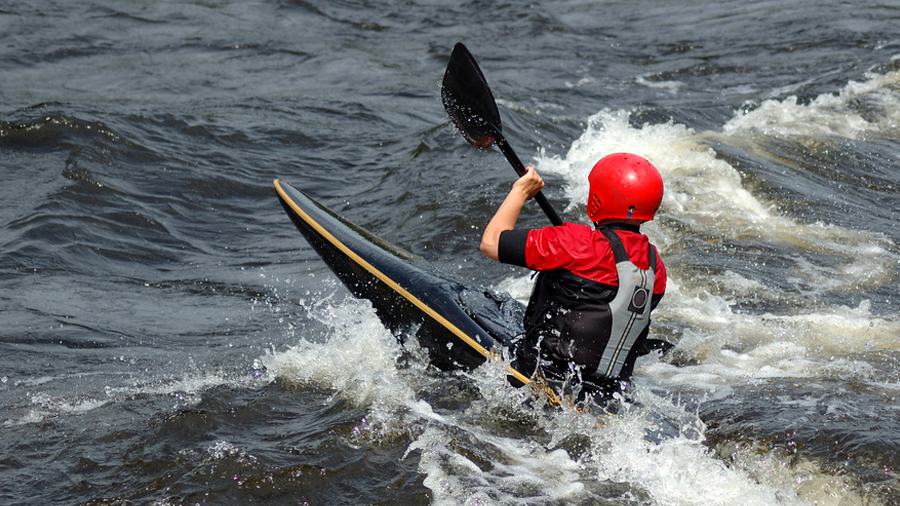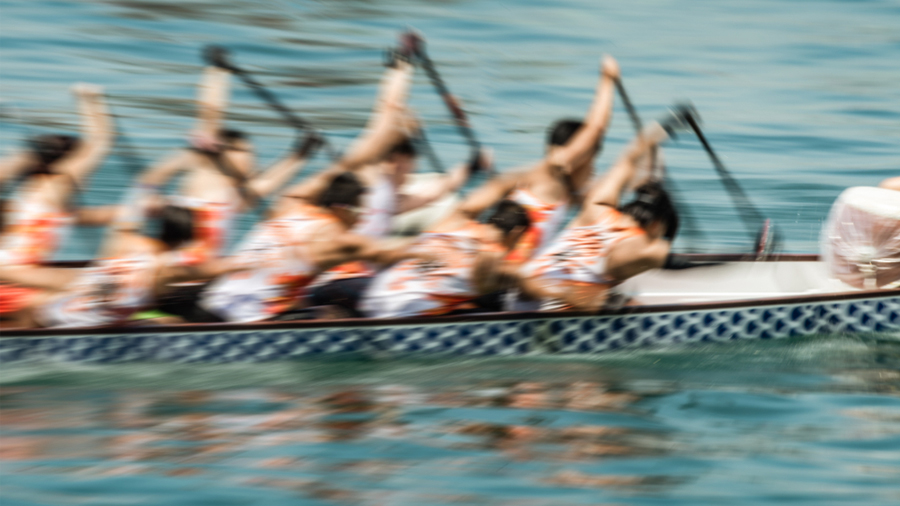#Aquatics
Search Result: 2
Sports Recommendation: Canoeing
There are various types of canoe. Different types of canoe are used for different purposes. In general, the sport can be divided into kayaking and Canoeing. As far as design is concerned, a kayak has a covered deck while a canoe only has an open deck. Both types of canoe are equipped with seats. A kayak paddler uses a paddle with two blades while a canoe paddler uses a paddle with a single blade.Athletes in a sprint wins if they finish the race the fastest. The course of a sprint is located on a river or sea. The distances are 200 metres, 500 metres and 1000 metres. There are groups of 1, 2 or 4 athletes. The course of a slalom is on river rapids. Athletes need to go through a number of gates during the race. A gate consists of two poles. There are downstream gates and upstream gates. Athletes need to pass through a downstream gate in the downstream direction and an upstream gate in the upstream direction. If the athletes touch the pole of a gate or fail to pass through a gate, there will be time penalties. In addition to speed racing, canoeing has other forms of competition, for example canoe marathon, which requires high physical fitness, and canoe polo, which requires teamwork. Here are a few common forms of canoeing in Hong Kong: •Canoe MarathonCanoe marathon is long distance canoeing. It is usually divided into age groups. The course is about 18 to 23 km long, while courses of international competitions may be up to 30 or 40 km long, which are extremely challenging. If geographical or other factors make it impossible to have a course of a suitable length, then the course goes around a short course a number of times. Canoe marathon requires athletes to have explosive sprinting strength. It also tests their ability of making turns. Some marathon courses goes through rivers, lakes, rapids, bays and the sea, which test athletes' ability to canoe on calm water and rapid currents. The most highly regarded canoe marathon is the ICF World Canoe Marathon.•Canoe PoloAs the name suggests, canoe polo is a combination of canoeing and water polo. It is played by two teams of five players. The players control the canoe and try to score goals. The team with more goals wins. Canoe polo is challenging and exciting. Athletes need good canoeing skills and a sensitive touch for offence and defence.•Kayak Course RaceIn kayak course race, athletes need to pass all checkpoints to reach the finishing point. The course is from 1000 m to 5000 m long, depending on factors such as the age of the athletes or the environmental restrictions. Since the race is not carried on fixed channels, athletes must have a good sense of distance, be skilful and devise a strategy to pass the checkpoints in the best route.There are many canoe elite athletes in Hong Kong. The have represented Hong Kong in international competitions such as the Olympic Games, World Championships, the Asian Games and the National Games of the People's Republic of China. They have won prizes in various international and intercity competitions.Kayaking Courses offered by Water Sports Centres of the LCSDKayaking is a sport for all ages. Its equipment is simple. It is a popular outdoor sport. The Water Sports Centres of the LCSD provide different types of canoe for rent. They offer different kayaking certificate training courses, which last from one to three days and include training courses for young people which provide basic knowledge and practice opportunities to children from 8 to 13 years old. Many community canoe clubs also provide courses that are suitable for people all ages. Participants can enjoy paddling under guidance from coaches.To take a kayaking course, visit the website of the LCSD or visit the related courses (Canoe or Kayak)promoted in Youth.gov.hk website.
The dragon boat sport requires team work
Do you remember? At the 2008 Beijing Olympics, the dragon boat was one of the transportations for the Olympic torch relay in Hong Kong, adding a refreshing and regional touch to the event. Origin and developmentThere are numerous versions about the origin of the dragon boat. The most widely adopted version is: it started from 278 BC, during a period known as the Warring States in Chinese history, to commemorate the patriotic poet Qu Yuan. Since then the dragon boat races have been held every year on the fifth day of the fifth month of the lunar calendar. Despite being a festive activity for the Tuen Ng Festival, the dragon boat race was not considered as a sport activity until 1976. In that year the former Hong Kong Tourist Association held the first International Dragon Boat Invitational Competition at Shau Kei Wan Typhoon Shelter. It brought international recognitions to the dragon boat race which eventually became a sports competition. As the dragon boat sport gained popularity around the globe, the International Dragon Boat Federation was formed in 1991 during the Hong Kong International Races. The Asian Dragon Boat Federation was formed in Beijing in the following year. The Hong Kong China Dragon Boat Association (HKCDBA) and other local groups are dedicated to organising and promoting dragon boat activities in Hong Kong. Team workThe dragon boat sport requires team work. The drummer, paddlers and steersman have to cooperate to attain speed. • Drummer and paddlerStationing on the bow, a drummer is responsible for conducting the tempo of the paddlers. An excellent drummer can help the paddler crew push the envelope. When two boats are getting close or their drumbeats overlap, the drummer has to blow a whistle so that the paddlers at the back of the boat can get the signal to keep up with the tempo. There are three to five ways of drum beating. Different beating sounds represent different ways and speed of paddling. The crew have to paddle in accordance with the drum beats. The more uniformly the crew paddles, the faster the boat will go. • SteersmanA steersman is responsible for keeping the boat to move in a straight course. A skilful steersman can help the boat accelerate by reducing drag when he minimises the contact between the boat and the water surface. The steersman needs to keep the flat part of the rudder beneath the water during the whole course of the race, and is not allowed to make any move that would induce thrust. In general, persons having reached the age of 12 and with the ability of swimming 50 metres are eligible to join this sport. If you are interested in taking training courses on the dragon boat sport, please contact the HKCDBA at 3618 7510 or visit their website. You may also look for training classes provided by the Leisure and Cultural Services Department.







